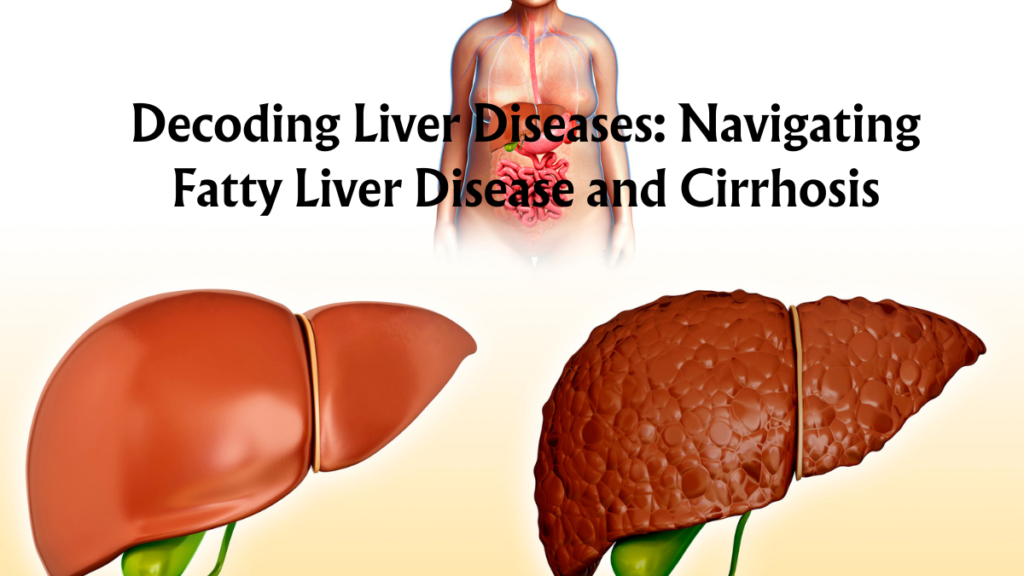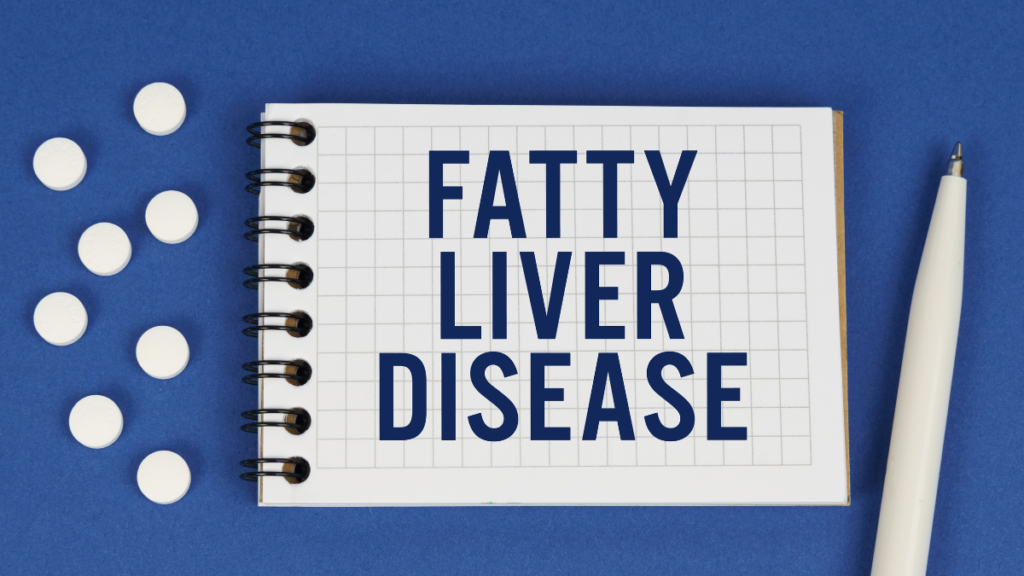Decoding Liver Diseases: Navigating Fatty Liver Disease and Cirrhosis
Liver diseases encompass a spectrum of conditions that demand attention for their impact on overall health. Two significant players in this arena are Fatty Liver Disease and Cirrhosis. Let’s explore the distinct characteristics, causes, and management strategies for these liver-related challenges.

1. Fatty Liver Disease: The Silent Intruder
– Overview: Fatty Liver Disease, or hepatic steatosis, involves the accumulation of fat in liver cells, impeding normal liver function.
– Types:
– Non-Alcoholic Fatty Liver Disease (NAFLD): Linked to obesity, insulin resistance, and metabolic syndrome.
– Alcoholic Fatty Liver Disease (AFLD): Results from excessive alcohol consumption.
– Symptoms:
Often asymptomatic in the early stages. Fatigue, abdominal discomfort, and an enlarged liver may manifest in later stages.
– Management:
Lifestyle modifications include weight loss, a balanced diet, and regular exercise. Addressing underlying conditions is crucial.

2. Cirrhosis: The Advanced Stage
– Overview: Cirrhosis represents the advanced scarring of the liver tissue, resulting from prolonged liver damage and inflammation.
– Causes:
– Chronic alcohol abuse.
– Chronic viral hepatitis (B, C).
– Non-alcoholic steatohepatitis (NASH), a severe form of NAFLD.
– Autoimmune liver diseases.
– Symptoms:
-Fatigue, easy bruising, swelling in the legs and abdomen, and confusion due to compromised liver function.
– Management:
While cirrhosis is irreversible, management focuses on addressing underlying causes, symptom relief, and preventing further liver damage.

Key Differentiators:
– Progression: Fatty Liver Disease can progress to cirrhosis if underlying causes are not addressed. Cirrhosis, once established, is a more advanced and irreversible stage of liver damage.
– Reversibility: Early stages of Fatty Liver Disease may be reversible with lifestyle changes. Cirrhosis, being advanced scarring, is generally irreversible.

Prevention and Lifestyle Strategies:
– Fatty Liver Disease: Maintaining a healthy weight, balanced diet, limiting alcohol intake, and managing conditions like diabetes contribute to prevention.
– Cirrhosis: Preventing the progression of liver diseases, addressing risk factors, and seeking early medical intervention are key preventive measures.

Conclusion: Navigating Liver Health for a Resilient Future
Understanding the nuances of Fatty Liver Disease and Cirrhosis equips individuals with the knowledge to take proactive steps in maintaining liver health. Lifestyle modifications, early detection, and addressing underlying causes are pivotal in navigating these liver-related challenges and fostering resilience.
FAQs about Liver Diseases
1. Can Fatty Liver Disease progress to Cirrhosis?
– Yes, if underlying causes are not addressed, Fatty Liver Disease can progress to more severe stages, including cirrhosis.
2. Is Cirrhosis always a result of alcohol abuse?
– No, while chronic alcohol abuse is a common cause, cirrhosis can also result from chronic viral hepatitis, autoimmune liver diseases, and non-alcoholic causes such as NASH.
3. Are there specific symptoms that indicate liver disease?
– Symptoms vary, but common signs include fatigue, abdominal discomfort, swelling, and changes in skin color. Consultation with a healthcare professional is crucial for accurate diagnosis.
4. Is liver transplantation the only option for advanced cirrhosis?
– In some cases, liver transplantation may be the only viable option. However, early intervention, lifestyle modifications, and addressing underlying causes can slow the progression and improve outcomes.
5. Can liver diseases be completely cured?
– Depending on the stage and cause, some liver diseases may be manageable or reversible with early intervention and lifestyle changes. Cirrhosis, however, is generally irreversible. Regular medical monitoring is essential for effective management.
https://optimalhealth.in/health/life-style-disease/
Unveiling the Shadows: Insights into Certain Cancers – Breast, Colorectal, and Lung Cancer






